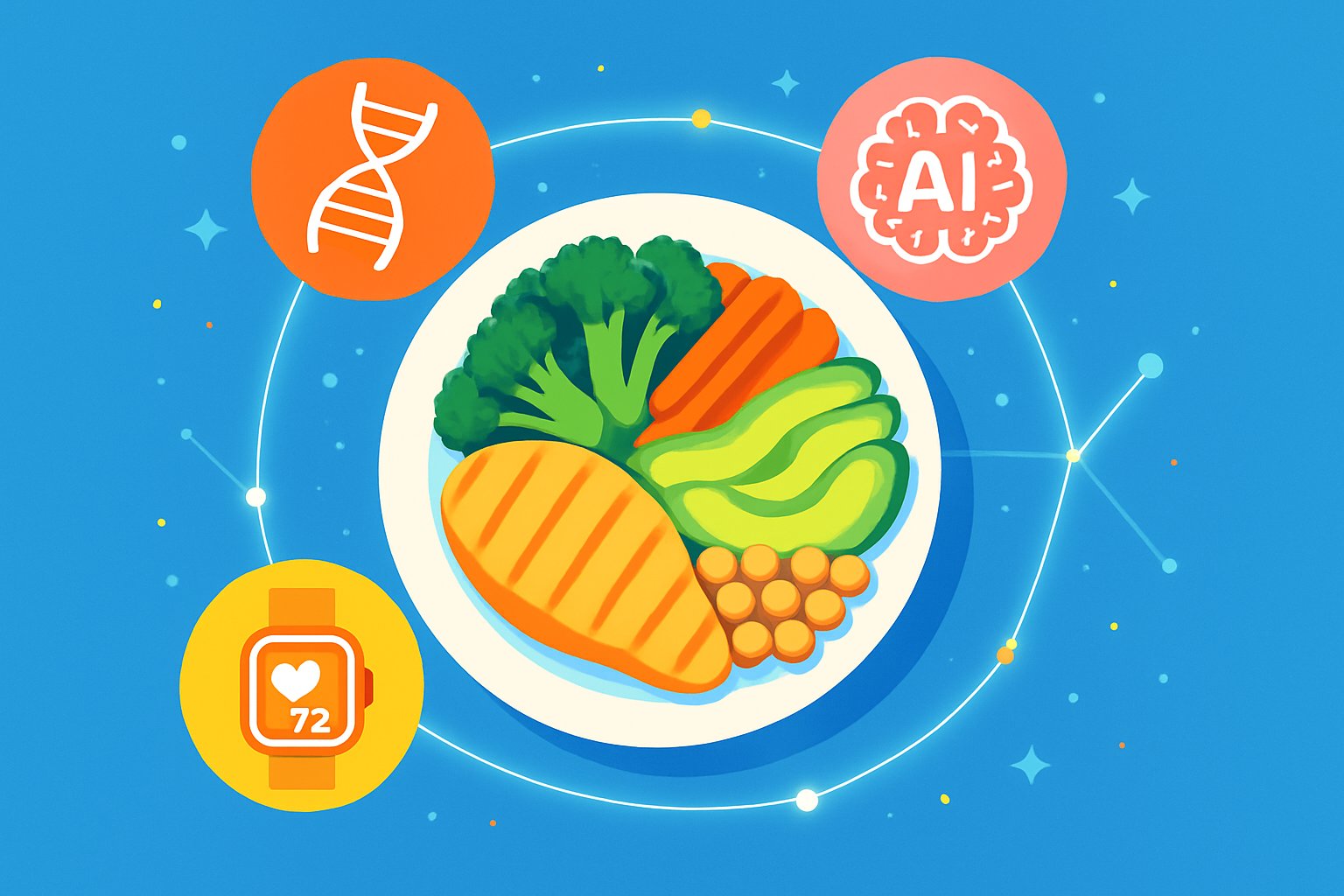
AI CERTS
5 hours ago
Nutrition AI Powers DNA-Based Diet Revolution
Moreover, market analysts project double-digit growth for precision nutrition services through 2034. Yet, experts caution that clinical proof still lags behind commercial hype. Nevertheless, privacy and regulatory questions demand attention as data collection expands. This article examines the technology, players and policy landscape guiding this new era of personalized eating.
Market Momentum Accelerates Fast
Investment is rising rapidly. ResearchAndMarkets values the nutrigenomics market at USD 5.37 billion in 2023 and expects triple growth by 2034. Meanwhile, SNS Insider predicts even faster expansion, citing 16 percent CAGR.

- USD 15.69 billion opportunity by 2034, according to ResearchAndMarkets.
- USD 21.54 billion for AI in personalized nutrition, says Towards FnB.
- Retail channels expand through Vitamin Shoppe and employer programs.
- Startups attract venture capital amid rising obesity costs.
Consequently, analysts see fertile ground for platform differentiation. However, forecasts vary because firms count supplements, labs and software differently. These discrepancies matter when sizing competitive threats.
Strong momentum is undeniable, yet definitions remain fluid. Consequently, understanding the technology stack becomes essential.
Key Technologies Driving Personalization
Multi-omics integration sits at the core. Machine-learning models ingest DNA variants, blood lipids, microbiome species and wearable data to predict nutrient responses. Moreover, reinforcement learning agents refine recommendations after each logged meal.
Large Language Models enhance conversational coaching. InsideTracker’s Terra assistant blends a knowledge graph with GPT-style reasoning to answer user questions in everyday language. Consequently, adherence improves when advice feels responsive.
Academic prototypes like NutriGen show how Nutrition AI can auto-generate meal plans that respect genetics, allergies and cultural cuisine. Meanwhile, MealMeter pairs camera vision with nutrient estimation for real-time feedback.
These tools extend far beyond single-gene reports. Nevertheless, technology alone cannot guarantee health impact, which depends on real-world validation.
Leading Vendors And Partnerships
Commercial competition intensifies. GenoPalate upgraded its food-index algorithm, introduced DNA-based supplements, and moved into 700 Vitamin Shoppe stores during 2025. Additionally, LifeNome formed joint ventures targeting corporate benefits markets.
InsideTracker answered with Nutrition DeepDive, which merges food logs, blood markers and polygenic scores. Moreover, the company launched a private virtual coach positioned as a biometric guardian.
GenoPalate leaders claim their Nutrition AI pipeline now evaluates 140 genetic markers per customer. However, critics ask for peer-reviewed evidence supporting such granular guidance.
- DNA-centric: GenoPalate, Nutrigenomix, DNAfit.
- Hybrid omics: InsideTracker, ZOE, Viome.
- Enterprise services: LifeNome, DayTwo partnerships.
Vendor claims highlight growing sophistication yet illuminate evidence gaps. Therefore, benefits and limitations deserve balanced review.
Benefits And Current Limitations
Advocates argue that genetically informed plans improve nutrient targeting and motivation. Furthermore, multi-omics dashboards visualize progress, which can strengthen engagement in Personalized Health programs.
- Earlier detection of micronutrient deficiencies.
- Dynamic coaching that factors sleep, stress, and Wellness scores.
- Customized supplement dosing aligned with genotype.
- Higher plan adherence reported by some pilot users.
In contrast, systematic reviews find limited clinical benefit from DNA-only recommendations. Additionally, overclaiming invites regulatory scrutiny and may erode consumer trust.
Privacy presents another hurdle. Genetic and microbiome data require strict governance, yet policies vary widely between vendors. Consequently, risk analysts flag potential breaches.
Cost also restricts access, potentially widening Personalized Health disparities. Nevertheless, sliding-scale models and employer subsidies are emerging countermeasures.
Without rigorous trials, Nutrition AI remains a promising hypothesis rather than confirmed therapy. Therefore, transparent validation will shape acceptance.
Benefits entice early adopters, yet caveats urge caution. Subsequently, regulatory and ethical frameworks gain importance.
Regulation Privacy And Ethics
Regulators walk a fine line. The FDA oversees diagnostic claims, while the FTC monitors deceptive marketing. Moreover, CLIA rules cover laboratory accuracy.
Many vendors label reports as Wellness tools to avoid medical device burdens. Nevertheless, that stance does not protect them from enforcement when health claims appear.
Data governance grows complex. HIPAA applies only when covered entities handle records. Meanwhile, GDPR imposes stricter rules for European subjects.
Professionals can enhance their expertise with the AI in Healthcare Specialist™ certification, which details compliance strategies for genomic data platforms.
Therefore, robust governance will decide whether Nutrition AI scales responsibly across global markets.
Clear rules shield consumers and spur innovation. Consequently, strategic foresight informs future outlooks.
Future Outlook And Strategy
Forecasts suggest multi-omics platforms will reach mainstream status within a decade. However, clinical credibility will determine long-term staying power.
Researchers plan larger randomized trials that could finally test Nutrition AI against conventional diet counseling. Consequently, evidence pipelines may mature by 2028.
Employers already pilot Personalized Health benefits linking wearables, biometric screenings, and grocery discounts. Moreover, population-level Wellness analytics support proactive risk management.
Strategists should monitor supply chain partnerships. Ingredient companies now court genomics firms to co-develop personalized supplements, blending consumer loyalty with regulatory complexity.
Meanwhile, open-source toolkits could democratize Nutrition AI development for academic hospitals, widening method transparency.
Nevertheless, scaling Nutrition AI requires business models that reward outcomes, not perpetual subscriptions, while promoting equitable Wellness access.
Future winners will blend robust science, secure data, and empathetic coaching. Therefore, continuous certification can keep professionals ahead.
Nutrition AI sits at the intersection of data science, consumer demand and genomics. Moreover, mastering Nutrition AI concepts early can create strategic advantage. Recent retail deals signal accelerating adoption. Nevertheless, independent trials must confirm that genetic signals improve outcomes beyond standard guidance. Regulators will scrutinize claims, while privacy advocates track data sharing. Personalized Health visionaries can still shape trustworthy frameworks through transparent methods and third-party audits. Consequently, professionals who grasp both technology and ethics will steer future innovations toward inclusive Wellness gains. Readers seeking deeper expertise should pursue the certified pathway above and monitor ongoing clinical evidence.



